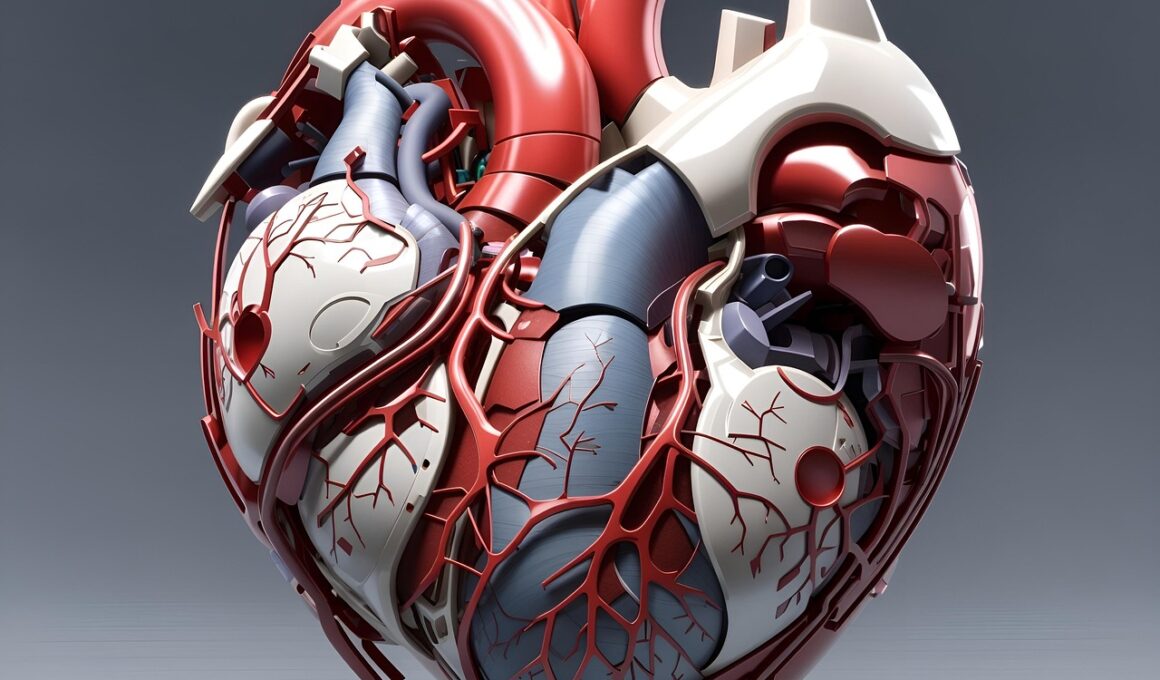Understanding Cardiovascular Fitness: A Starter’s Perspective
When embarking on a cardiovascular fitness program, it’s crucial to understand what cardiovascular fitness really is. Cardiovascular fitness refers to the efficiency of the heart, lungs, and circulatory system during physical activity. It indicates how well your body can supply oxygen to muscles and how efficiently those muscles can utilize that oxygen. Improving cardiovascular fitness involves consistent exercise that elevates your heart rate. Several activities can enhance your cardiovascular fitness, such as running, cycling, swimming, and brisk walking, among others. Each activity varies in intensity and duration, contributing uniquely to your overall cardiovascular health. Additionally, your current fitness level and goals play a significant role in determining which activity is most suitable for your needs. In starting any program, ensure your chosen activities are enjoyable, sustainable, and fit well into your lifestyle. Always consider starting with moderate exercises as you build your endurance and strength. Keeping a balanced approach allows for gradual progress while reducing the risk of injury and burnout. Keep in mind that increasing your cardiovascular fitness can lead to weight management, reduced stress levels, and overall improved quality of life.
Benefits of Cardiovascular Fitness
Engaging in regular cardiovascular exercise offers numerous benefits for both physical and mental health. One major advantage is improved heart efficiency. As you engage in more cardiovascular activities, your heart becomes stronger and pumps blood more effectively. This efficiency helps reduce the risk of developing heart disease. Furthermore, enhanced circulation boosts overall energy levels and fosters quicker recovery from exertion. Another significant benefit is weight control; cardiovascular exercises are notably effective in burning calories, aiding in weight management or weight loss. Alongside weight management, cardiovascular fitness lowers blood pressure, enhances cholesterol levels, and improves the body’s sensitivity to insulin, further supporting metabolic health. Mental well-being also sees improvements, as regular exercise releases endorphins that combat stress and anxiety. This ‘runner’s high’ creates lasting feelings of happiness and well-being. Additionally, many find that cardiovascular activities provide an opportunity for social engagement, whether through group classes, sports, or community events. Making friends through shared exercises can motivate consistent attendance and accountability. Furthermore, cardiovascular fitness also serves as a foundation for other physical activities, allowing individuals to explore various interests, from dance to outdoor adventures.
Before starting a cardiovascular fitness program, it’s best to consult a healthcare professional, especially if you have existing health concerns. An important first step is assessing your current fitness level. This evaluation helps determine which activities suit your fitness goals and abilities. Consider beginning by documenting your activities, daily routine, and frequency of exercise. It is often beneficial to create a fitness log that includes duration, intensity, and types of exercises performed weekly. Over time, this log provides insight into your progress, helping you stay motivated. Setting realistic and measurable goals is essential. Goals can range from walking a specific distance to completing a 5K race. Such objectives should be SMART: Specific, Measurable, Achievable, Relevant, and Time-bound. Gradually increasing your activity level avoids overwhelming your body and decreases the chance of injury. To succeed, develop a comprehensive plan that includes a mix of cardiovascular workouts, strength training, and rest days. Such balance increases overall physical health while preventing burnout. Remember, consistency is key, and celebrating small milestones can significantly enhance your motivation. Long-term dedication to cardiovascular fitness yields substantial health rewards.
Types of Cardiovascular Exercises
When starting a cardiovascular fitness program, it’s important to understand the different forms of cardiovascular exercises. These range from low-impact to high-impact activities, catering to various fitness levels and preferences. Low-impact exercises like walking or swimming are easier on the joints, making them ideal for beginners or those recovering from injuries. Walking briskly, cycling leisurely, or engaging in water aerobics are excellent choices that promote cardiovascular health without excessive strain. Medium-impact exercises include activities like jogging, dancing, or moderate cycling, presenting a balance between effort and impact on the body. High-impact exercises, such as running or kickboxing, offer significant calorie burn and strength improvement, but they may not be suitable for everyone. Individuals should select activities they enjoy to enhance adherence to their program and increase overall enjoyment. Incorporating variety into workouts can prevent monotony and keep motivation high. Additionally, mixing different types of exercises prevents overuse injuries while maximizing overall fitness benefits. Cross-training, which involves alternating different workout types, is highly effective. As you progress, you can adapt the frequency, intensity, and duration to meet your advancing fitness level and personal goals.
To maximize the effectiveness of your cardiovascular fitness program, consider the principles of training. These principles guide your workout structure and can significantly impact results. Progression is critical; gradually increase duration or intensity to enhance fitness levels and avoid stagnation. This can be done by incorporating intervals or longer sessions as your endurance improves. Regularity strengthens fitness, so adhering to a consistent schedule is essential. Aim for a minimum of 150 minutes of moderate-intensity aerobic exercise or 75 minutes of vigorous-intensity cardio each week, according to health guidelines. Over time, prioritizing consistency will yield substantial improvements. Lastly, the principle of recovery cannot be overlooked. Adequate rest allows muscles to repair, reducing the risk of overtraining and injury—a common pitfall for enthusiastic newcomers. Ensure to incorporate rest days into your fitness routine and listen to your body during workouts. If you experience pain or fatigue, consider taking additional recovery time. Well-planned recovery ensures you can continually progress through your program effectively, making your cardiovascular fitness journey rewarding and sustainable. With patience and dedication, you will notice improvements in endurance and overall health.
Staying Motivated in Your Journey
Maintaining motivation can often be challenging, particularly as you begin your cardiovascular fitness program. Setting a clear and personal purpose for your program can significantly boost motivation. Identify why you want to enhance your cardiovascular fitness, which may include health benefits, improved self-esteem, or social interactions. This intrinsic motivation will help you stay committed during challenging times. Another effective strategy is to establish a support system, whether through friends, family, or joining fitness communities. Sharing your goals with others creates accountability while providing encouragement and support. Online forums and local running clubs can also enhance your social connections. Additionally, consider participating in fitness challenges, events, or classes that pique your interest. Having upcoming races or group classes on the calendar will keep you focused. Documenting progress, such as improvements in endurance or weight loss, can also reinforce motivation. Celebrate milestones, whether large or small, as each achievement exemplifies your hard work. Creating a reward system can encourage you to stay committed. Finally, always remember to listen to your body and adjust your program. Enjoy the journey, and appreciate each step towards achieving your cardiovascular fitness goals.
As you embark on your cardiovascular fitness journey, it’s essential to maintain a holistic approach toward your health. A balanced diet plays a pivotal role in supporting your exercise routine and achieving your fitness goals. Proper nutrition fuels your body for physical activity while aiding in recovery. Aim to consume plenty of fruits, vegetables, whole grains, and lean proteins. Proper hydration is equally important; drinking enough water throughout the day, particularly before, during, and after exercise, enhances performance. Listening to your body’s nutritional needs will help optimize your fitness outcomes. Avoid overly restrictive diets, as they can lead to energy depletion and hinder your performance. Instead, focus on moderation and balance; include a variety of foods to ensure you receive all necessary nutrients. On your fitness journey, ensure you prioritize sleep quality too. Adequate rest is essential for muscle recovery and overall well-being, affecting performance and motivation. Aim for at least seven to nine hours of good quality sleep each night. By integrating nutrition, hydration, and sleep, you will create a solid foundation that supports your cardiovascular fitness program effectively. This comprehensive approach ensures long-term success and well-being.


